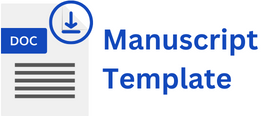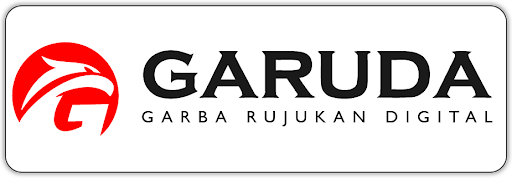Efektivitas Technode Hydrogel 0,02% Sebagai Penyembuhan Luka Post Operasi Ovariohisterectomi dan Orchhiectomi Pada Kucing Domestik (Felis silvestris Catus) Dibandingkan Iodine 10%
DOI:
https://doi.org/10.20961/jaht.v1i1.334Keywords:
AMR, antibiotic, hydrogel, technode, woundcareAbstract
Antibiotics have been reduced to support Anti-Microbial Resistance (AMR) campaigns worldwide due to widespread bacterial resistance to commonly used antibiotics, the emergence of new superbugs or diseases, and the impact of antibiotic waste on the environment and soil. Iodine is generally used as an alternative because it has antibacterial and antifungal potential, suitable for preventing wound infections. However, iodine can cause a serous exudative effect and quickly become inactive when mixed with serous fluids. The study aims to find alternative therapeutic preparations to replace antibiotics when treating open wounds. Experimental research in which domestic cats were divided into two groups. Group A was given 10% iodine therapy twice a day, while Group B was given Technode Hydrogel 0,02% therapy twice a day for seven days. The wound score was calculated based on three points with the following criteria: discharge, swelling, erythema, and dehiscence. The scoring system was adopted as suggested by Sylvestre. The results showed that Technode Hydrogel 0,02% had an average wound score of 0,457 compared to 10% iodine which was 0,714. Hydrogel Technode is expected to be the best alternative for wound care, both in terms of efficacy and efficiency, to help the healing process of open wounds.
References
Brandt, K.K., Amezquita, A., Backhaus, T. dan Topp, E. 2015. Ecotoxicological assessment of antibiotics: A call for improved consideration of microorganism. J. Environt. Int. 1 (2): 120-121.
Dlugosz, A.P. 2017. The Effects of Antibiotics on the Structure, Diversity, and Function of a Soil Microbial Community. J. Environt. Int. 1 (3): 201-202
Gold, M.H., Bhatia, A.C., Chilukuri, S. Robb, C.W. 2020. Topical Stabilized Hypochlorous Acid: The Future Gold Standard for Wound Care and Scar Management in Dermatologic and Plastic Surgery Procedures. Journal of Cosmetic Dermatology 0 (0): 2-8.
Biedroń, R., Konopiński, M.K., Marcinkiewicz, J., Józefowski, S. 2015. Oxidation by Neutrophils-Derived HOCl Increases Immunogenicity of Proteins by Converting Them into Ligands of Several Endocytic Receptors Involved in Antigen Uptake by Dendritic Cells and Macrophages. J. Plos One 10 (5): 1371-1372.
Kiamco, M.M., Zmuda, H.M., Mohamed, A. 2019. Hypochlorous-Acid-Generating Electrochemical Scaffold for Treatment of Wound Biofilms. Sci. Rep. 9 (01): 2681- 2683.
Sakarya, S., Gunay, N., Karakulak, M., Ozturk, B. & Ertugrul, B. 2014. Hypochlorous acid: An ideal wound care agent with powerful microbicidal, antibiofilm, and wound healing potency. Wounds-Compend. Clin. Res. Pract. 26, 342–350.
Sylvestre, A., Wilson, J. 2002. A Comparison of Two Different Suture Patterns for Skin Closure of Canine Ovariohystrectomy. Can.Vet. J. 43(9):699-702.
Herman, T.F, Bordoni, B. Wound Classification. Treasure Island (FL): StatPearls Publishing; 2022 January. Retrieved June 01, 2022. Available from: https://www.ncbi.nlm.nih.gov/books/NBK554456/.
Schochet, L. D. dan Jialal, I. Physiology, Edema. Treasure Island (FL): StatPearls Publishing. Retrieved Juni 23, 2022. From: https://www.ncbi.nlm.nih.gov/books/NBK537065.
Panasci, K. 2014. Acute Care Handbook for Physical Therapist. Chapter 12 - Burns and Wounds. Ed. 4th (ed.). W.B. Saunders. London.
Rosen, R.D., Manna, B.. (2022). Wound Dehiscence. StatPearls Publishing-Treasure Island. Michigan.
Syed, A. Serosanguineous: What is It, Appearance and More. Retrieved June 9, 2022. From https://www.osmosis.org/answers/serosanguineous.
Danarti, R. 2015. The effect povidone-iodine on the wound healing process: A study on fibroblast populated collagen lattice (FPCL) model. J. Med. Sci. (Berkala Ilmu Kedokteran). 46 (03): 1-13.
Bainbridge, P. 2012. Wound Healing and The Role of Fibroblast. J. Wound Care 22(8): 407-408.
Thomas, H. Cathy, B.S.N. 2011. Checklist for Factors Affecting Wound Healing. Advances in Skin & Wound Care 24 (04):192-193.











